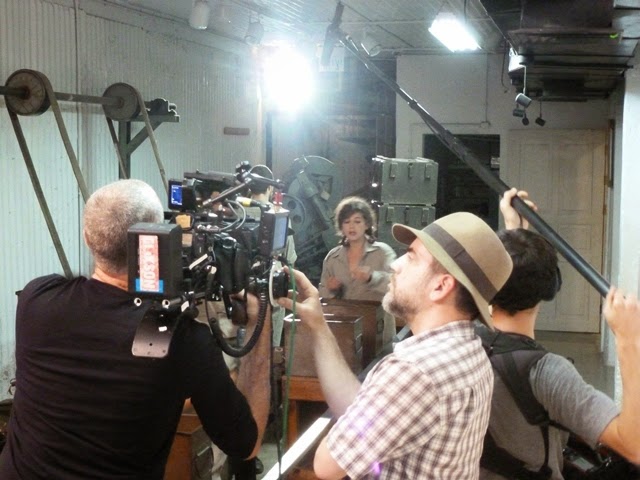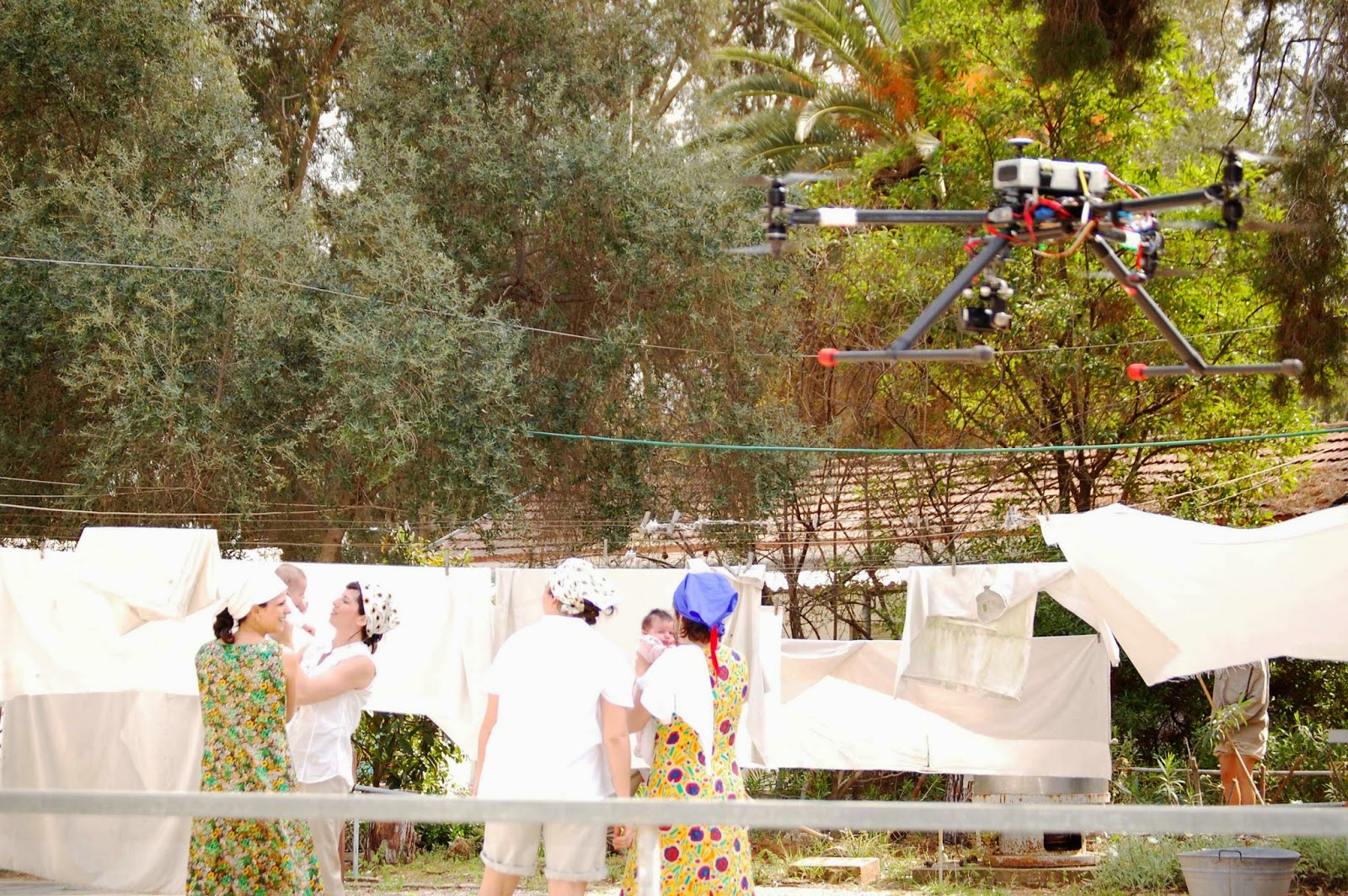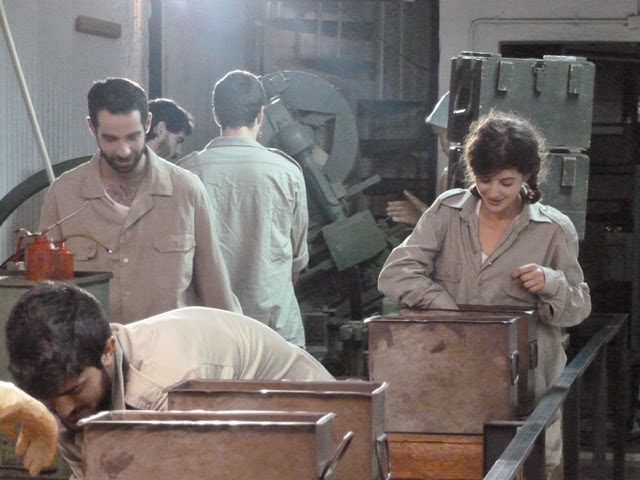Blog dev and testing page
H1 Title here
Dramatic story of top-secret pre-state bullet factory headed to big screen
June Glazer

Categories: Impact Blog,
Tags: historical preservation,
| A film crew recaptures the dramatic story of the secret factory where more than 2 million bullets were manufactured. |
One of the most dramatic chapters in the struggle to establish the state of Israel will soon be portrayed in a documentary, thanks to an American news reporter turned movie producer who recently filmed at the site where the story of a clandestine bullet factory unfolded 70 years ago.
Laurel Fairworth, an Emmy-Award-winning television journalist based in Philadelphia, was inspired to re-create for posterity this little-known story of secrecy and heroism after visiting Israel for the first time two years ago.
"My parents loved Israel, and before my mother passed away she made me promise to visit. Frankly, I had no desire to do so, but to fulfill my promise I went on a mega-mission with our Jewish Federation. Very simply, I was smitten," Fairworth said at the Ayalon Institute on the day filming for the documentary "The Secret Beneath the Hill" began there in March. "Ayalon Institute" was the code name for the clandestine underground munitions plant that today is a national museum.
"The mission took us to the usual places, but also to a place nicknamed the Bullet Factory. It didn't sound interesting, but then we came here and I heard the story of these young, heroic, modest people, some of them orphans from the Holocaust. I was mesmerized," Fairworth said.
 |
| The secret ammo plant, called Ayalon, was located at the site of a facility where groups got trained for kibbutz life. |
"In 1945, it became clear to then-Prime Minister David Ben-Gurion that the bloody encounters with British rule were becoming more severe and that a war with the Arabs was looming," said Noa Gefen, executive vice chair for the Society for Preservation of Israel Heritage Sites (SPIHS). The Ayalon Institute and SPIHS are partners of the Jewish National Fund, which helps support and preserve important historical sites throughout Israel, along with many other programs.
“The Haganah, a Jewish paramilitary organization organized in the 1920s that later merged into the Israel Defense Forces in 1948, was tasked with preparing for the war and readying the necessary arms. Huge quantities of weapons were manufactured in several secret plants, but the big challenge was making ammunition -- specifically, 9-millimeter bullets,” Gefen explained.
The Haganah decided to set up a secret munitions plant at the kibbutz training facility and approached an incoming group to postpone their dream of starting a kibbutz to take on the work of building an underground factory and producing bullets. Perhaps most importantly, the group of 45 teenagers and young adults would be responsible for maintaining absolute secrecy, or else face certain death at the hands of the British, who had a military base within walking distance of the training facility.
 |
| Actors in period costume re-create the secret work that happened 24 feet below ground in the munitions plant. |
“The factory functioned under the noses of the British for three years while the group manufactured more than 2 million bullets," Gefen said. "There are stories like this all over Israel, but the creativity with which this group succeeded, and the way they kept the secret -- from the British, the others at the facility, even their own family members -- makes this unique.” What makes it even more clandestine is that all those who took part in the operation kept it secret for 30 additional years until the camp, by then long abandoned, was reclaimed as a national heritage site and the story was revealed.
 |
| A scene from the real site that's being re-created on film. |
The film, a docudrama created in partnership with Jewish National Fund, will re-create scenes from the story that take place both above and below ground, with actors in period costume. Fairworth has already lined up a publicity firm in Los Angeles to promote the film and a company in New York to distribute it. When the project is complete, the film will be entered in international film festivals to garner even more attention.
“We want to take it to festivals so more people will learn about this," Fairworth said. "We also want to do a companion educational piece and bring the film to universities, synagogues, and mixed religious groups. A shortened version will be provided to the museum and to the State of Israel,"
"There are a lot of stories out there about the Holocaust, and we hear a lot about Israel’s modern-day history, but there’s not much out there about the pre-state and the War of Independence era," the filmmaker added. "Soon, with the passing of those who helped make history, these stories will leave us forever. Unless we capture them now, it will be too late."
Follow the film's progress on the Ayalon Documentary Page on Facebook.
Dramatic story of top-secret pre-state bullet factory headed to big screen
June Glazer

Categories: Impact Blog,
Tags: historical preservation,
| A film crew recaptures the dramatic story of the secret factory where more than 2 million bullets were manufactured. |
One of the most dramatic chapters in the struggle to establish the state of Israel will soon be portrayed in a documentary, thanks to an American news reporter turned movie producer who recently filmed at the site where the story of a clandestine bullet factory unfolded 70 years ago.
Laurel Fairworth, an Emmy-Award-winning television journalist based in Philadelphia, was inspired to re-create for posterity this little-known story of secrecy and heroism after visiting Israel for the first time two years ago.
"My parents loved Israel, and before my mother passed away she made me promise to visit. Frankly, I had no desire to do so, but to fulfill my promise I went on a mega-mission with our Jewish Federation. Very simply, I was smitten," Fairworth said at the Ayalon Institute on the day filming for the documentary "The Secret Beneath the Hill" began there in March. "Ayalon Institute" was the code name for the clandestine underground munitions plant that today is a national museum.
"The mission took us to the usual places, but also to a place nicknamed the Bullet Factory. It didn't sound interesting, but then we came here and I heard the story of these young, heroic, modest people, some of them orphans from the Holocaust. I was mesmerized," Fairworth said.
 |
| The secret ammo plant, called Ayalon, was located at the site of a facility where groups got trained for kibbutz life. |
"In 1945, it became clear to then-Prime Minister David Ben-Gurion that the bloody encounters with British rule were becoming more severe and that a war with the Arabs was looming," said Noa Gefen, executive vice chair for the Society for Preservation of Israel Heritage Sites (SPIHS). The Ayalon Institute and SPIHS are partners of the Jewish National Fund, which helps support and preserve important historical sites throughout Israel, along with many other programs.
“The Haganah, a Jewish paramilitary organization organized in the 1920s that later merged into the Israel Defense Forces in 1948, was tasked with preparing for the war and readying the necessary arms. Huge quantities of weapons were manufactured in several secret plants, but the big challenge was making ammunition -- specifically, 9-millimeter bullets,” Gefen explained.
The Haganah decided to set up a secret munitions plant at the kibbutz training facility and approached an incoming group to postpone their dream of starting a kibbutz to take on the work of building an underground factory and producing bullets. Perhaps most importantly, the group of 45 teenagers and young adults would be responsible for maintaining absolute secrecy, or else face certain death at the hands of the British, who had a military base within walking distance of the training facility.
 |
| Actors in period costume re-create the secret work that happened 24 feet below ground in the munitions plant. |
“The factory functioned under the noses of the British for three years while the group manufactured more than 2 million bullets," Gefen said. "There are stories like this all over Israel, but the creativity with which this group succeeded, and the way they kept the secret -- from the British, the others at the facility, even their own family members -- makes this unique.” What makes it even more clandestine is that all those who took part in the operation kept it secret for 30 additional years until the camp, by then long abandoned, was reclaimed as a national heritage site and the story was revealed.
 |
| A scene from the real site that's being re-created on film. |
The film, a docudrama created in partnership with Jewish National Fund, will re-create scenes from the story that take place both above and below ground, with actors in period costume. Fairworth has already lined up a publicity firm in Los Angeles to promote the film and a company in New York to distribute it. When the project is complete, the film will be entered in international film festivals to garner even more attention.
“We want to take it to festivals so more people will learn about this," Fairworth said. "We also want to do a companion educational piece and bring the film to universities, synagogues, and mixed religious groups. A shortened version will be provided to the museum and to the State of Israel,"
"There are a lot of stories out there about the Holocaust, and we hear a lot about Israel’s modern-day history, but there’s not much out there about the pre-state and the War of Independence era," the filmmaker added. "Soon, with the passing of those who helped make history, these stories will leave us forever. Unless we capture them now, it will be too late."
Follow the film's progress on the Ayalon Documentary Page on Facebook.
html content and images here
Some content and h2

